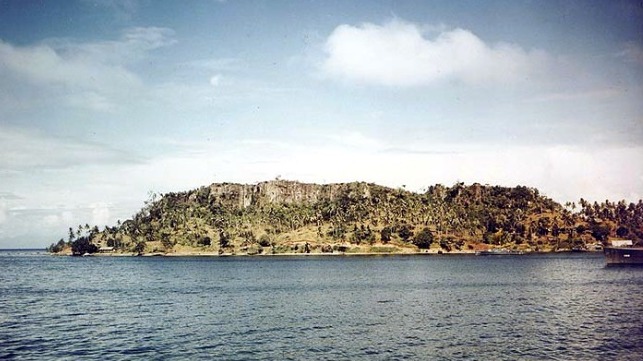The Tulagi Turning Point

The New York Times reported on 16 October that the People’s Republic of China had leased the island of Tulagi from Solomon Islands. A secret deal was apparently struck in September, no doubt around the time Prime Minister Manasseh Sogavare ascended to his leadership role and Solomon Islands announced its switch from recognising Taipei to Beijing.
Tulagi is remembered mostly as the place where the pivotal Allied campaign for Guadalcanal started in World War II. With the leasing of the island, we may well have a shift in the strategic competition in the Pacific.
Long-term access to Tulagi will provide Beijing with a base for commercial or military activity. For example, it may make managing regional Chinese fishing fleets easier. Fishing, however, is the least of the worries for the West. How long will it be before Tulagi begins to take on features like those found on the faux-island bases in the South China Sea? Will China build an airfield on Tulagi? China’s J-10 fighter aircraft could use Tulagi, as they’ve done in the Paracel Islands.
Tulagi also extends Beijing’s political influence. Cementing Chinese operations there could give China far greater reach in Solomon Islands and the Southwest Pacific. If Beijing manages the leasing agreement well, it will serve as a proof of concept for other Pacific island countries. Leasing an island may become financially very attractive to Pacific island elites. If that’s the case, then Tulagi is the thin end of the wedge. How long will be it before Chuuk in the Federated States of Micronesia votes for independence and pursues a similar leasing arrangement?
The Chinese interest in Solomon Islands has been noteworthy in recent months. Beijing appears to have promised $500 million in aid to Solomon Islands. In addition, the Taiwan News reported on September 20 that the China Railway Group had agreed to build and lease a railway system to service the Gold Ridge Mine on Guadalcanal through an $825 million loan. The mine had been closed due to a damaged tailings dam, but appears to slated for reopening.
It wouldn’t be a stretch to say that Beijing is well aware of the strategic importance of the Solomons. As an indication of how Beijing sees its efforts in the Pacific, Xinhua, the official news agency of the Chinese Communist Party, published an editorial titled "The future is bright for China, Pacific island countries." The author proclaimed, "China’s relations with the Pacific island countries, based on mutual benefit and a balance of righteousness and interests, are at their best time in history."
A senior State Department official told me that the US would rely on domestic opinion in the Solomons to push back against the Chinese. In a Western democracy, that might seem a plausible wish, but in Solomon Islands things are bit messier. Island, ethnic and wantok relationships will play out in the Tulagi story in ways that Washington may not adequately understand or appreciate. Political leaders in Honiara and Beijing might want one thing, but others in Solomon Islands may have another idea.
On October 24, the New York Times reported that the Solomon Islands attorney-general indicated that the Tulagi leasing agreement had problems, which presumably can be fixed. These technical challenges by no means preclude an agreement. Assuming the deal goes ahead, it’s unclear what chiefs in the Central Province of Solomon Islands will do. With enough financial incentive, they may acquiesce; on the other hand, they could opt for independence.
The leasing of Tulagi should serve as a wake-up call for the ANZUS+J countries (Australia, New Zealand, the United States and Japan). China has several strengths that are difficult to counter. Those strengths start with the fact that China is a single actor, whereas ANZUS+J is a coalition and therefore far less efficient. China uses economic engagement in a way that’s very attractive to Pacific island elites, whereas the West’s economic muscle is far more diffuse and slower to materialise in the islands. China’s use of a diaspora is a policy tool unavailable to ANZUS+J. Policies in place today may be too meek to adequately counter Chinese efforts.
There are things the Western states can do. First, diplomats should be better trained in understanding the Pacific islands. Building institutional capacity is an absolute necessity.
A second step would be to rethink the ways in which states engage with the islands. Development agencies are central to this engagement, but the development perspective alone falls short in addressing the strategic importance of the islands. ANZUS+J countries should maintain their expanded development spending, while at the same time thinking more broadly about how they work in the region. The essential criterion for assessing ANZUS+J work in the Pacific should be effectiveness, not dollars spent.
A third requirement is to profoundly deepen people-to-people engagement in the Pacific. The utility of bringing people from the Pacific along with those from ANZUS+J countries cannot be overstated. Having contacts and relationships on the ground throughout the islands plays a vital role in understanding events. Track two diplomatic efforts can also help build deeper connections. In addition, the West should engage with churches through the lens of both people-to-people engagement and institution building. Greater understanding between peoples should be viewed as the West’s competitive advantage, one unlikely to be matched by the CCP.
The campaign that began at Tulagi has long been regarded as the turning point for the Allies in the Pacific during World War II. The island is again a turning point, but maybe not in ways we would welcome.
Alan Tidwell is director of the Center for Australian, New Zealand and Pacific Studies at Georgetown University in Washington.
The opinions expressed herein are the author's and not necessarily those of The Maritime Executive.
